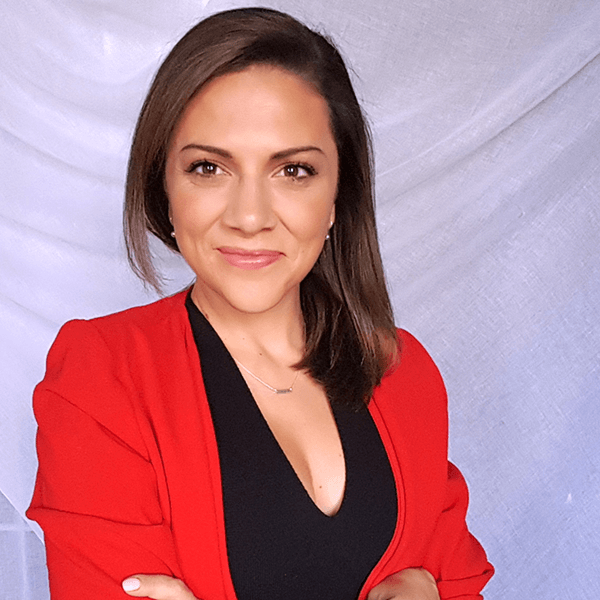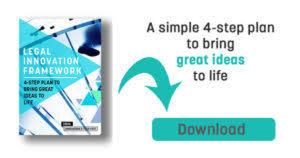How to Build a Winning Business Case for Legal Innovation
)
Creating a business case for legal innovation can be a major stumbling block for many legal professionals. In fact, it’s the one step of the legal innovation process that causes most people to come unstuck, not because it’s particularly difficult or time consuming, it’s a problem of translation.
I know, it’s ironic that we as lawyers would have a hard time articulating something as that’s what we do all day! But it can be extremely difficult to harness the passion you have for a particular idea and then put it into a format that the rest of the business can understand.
|
“Assume no one has time and no one cares” -Bruce Hardy |
You always have to assume that no one has any time to read what you were talking about and that no one cares (I’m sure that they do care a little bit, but honestly, none of us have that much time to care). So your business case has to make people care enough to get it across the line.
Building a good business case for legal innovation is all about winning the hearts and minds of the people that need to know about your idea. And for me, the best way to bring your business case to life is to think of it in cinematic terms:
Your innovation idea is a movie…Your business case is the trailer
Think of all the things that you would want to know about a movie before you would go to see it – all these elements need to be in your business case. What kind of movie is it? How much are the tickets? Who is starring in it?
Think of the people who are involved as the stars of your innovation movie, you need to get those people in your business case. Is it going to get off the ground? When is it actually going to happen? And most importantly, what’s in it for you?
When you are asking about what genre a movie is you want to know “Am I going to cry? Am I going to laugh? Am I going to be thrilled? Is it going to be amazing?” It’s the same thing for a business case: how is this particular innovation idea going to help me to meet my KPIs or help me to meet the company strategy?
For a more detailed look at the legal innovation process download this free eBook Legal Innovation Framework: 4 Step Plan to Bringing Great Ideas to Life.
How to Build a Basic Business Case
Here is an easy-to-use, board table ready, template that will help you put your business case together. Download it here https://www.checklistlegal.com/legaltechfest/
Here is an explanation of some of the key sections:
Purpose
What is the number one thing the decision maker is interested in? Link the idea to that.
BLUF = Bottom Line Up Front… What is the point of this business case and what is the best way to explain that story to your decision maker?
e.g. Productivity is a key strategy for the legal team at Corporate Company Ltd. After assessing two different technologies as triage tools as well as the current mailbox method (where a paralegal conducts triage on emails), we find Zingtree as best suited to our needs now and the ease of use means practically everyone in the legal team could learn how to use it.
The purpose of this document is to seek approval to purchase an enterprise grade licence for Zingtree to support triage and online intake for the entire legal team at CCL.
Issue Overview
What’s the situation, issue, challenge or opportunity?
What’s wrong with the world at the moment (use clear examples) Why do we need this idea? What is the challenge we are facing? What opportunity do you see that this idea captures?
User
Who is the main focus of the tool?
This tool is [DESCRIBE IDEA] for [USER TYPE], who want to [THING THEY WANT TO DO], so that they can [AWESOME REASON FOR THE THING THEY WANT TO DO]
e.g. This tool is an automated legal letter builder for Channel Managers who want to send performance warning letters to external sales partners so that they can quickly and confidently react to poor behaviour.
Benefits and Return
Features tell but benefits sell! What are the key impacts you see your idea having on the WORLD? Think big! Include images if you can and get specific with returns.
- Significantly (greater than 10%) reduce time by lawyers spent on XXX [Low Value work]
- Significantly (greater than 10%) reduce cycle time for responding to clients and closing out matters
- Gather key metrics on ‘hot’ issues and trends during certain times
- Provide a repository for guiding clients to self-help tools and resources prior to entering a request for legal help
- Service latent legal demand i.e. demand for legal services which the legal team is not yet able to meet or which clients are unwilling or unable to discuss with lawyers directly (conservatively estimated to be a further 10-25% based on recent studies and work in other areas)
Key Numbers
Here’s where you drag out some of those metrics that you’ve already done in the testing phase. Compare the state before and after and spell out the difference it will make. You don’t have to set out your key numbers like this, but it can help you structure your idea narrative if you are lost in data.
e.g. Before: Based on testing and legal team surveys conducted in April 2018, we spend 50,000 hours across the legal team on performing basic “bad triage” work – time spent assessing and divvying up work.
After: We believe that triage tools will reduce the amount of time spent on “bad triage” by 75%.
Difference: A saving of 37,500 hours of low value work.
Costs
Set out the key costs here (new software? IT integration? Licences?)
Time
How long will it take to set up? Is it easy to learn? What is your roll out timeframe?
Risks and Mitigation
People (especially lawyers) are going to be have risks in the back of their mind so it’s important to include them in your business case. Remember, if there was zero risk it’s unlikely there would be a benefit. State upfront what potential risks your idea presents and how do you plan to minimise them.
e.g. Data Security: The Zingtree portion of this tool is hosted in Amazon Web Servers (AMS). Under our Data Classification Policy, only content classified as Public or Internal can be stored in such an application. We have taken this into account with the content we put into the tool. In addition, we have activated IP Filtering to ensure only company IP Addresses can access the tool.
Client Interactions: There is a risk clients may feel disengaged from lawyers through using this tool or may seek to go around the tool and instead contact lawyers directly. Initial testing with clients has been received favourably and we have built a feedback link within the tool to monitor it’s use and collate feedback. We can adjust our approach in line with feedback.
Other Details
Here you could link to source research or other information that’s relevant for your idea.
Next Steps
What does the team recommend? What action or support do you need?
e.g. We recommend purchasing the software enterprise grade licence for $50,000 in year 1, $30,000 in year 2.
TIP: Make use of graphs and visuals where you can to display important information in an engaging and memorable way.
Perfect Your Elevator Pitch
Once you have your business case together, you’re going to have to explain your idea. Over and over and over! It’s tough. So it’s crucial to perfect your elevator pitch and succinctly explain exactly what your innovation is going to do.
Here’s an easy formula to follow:

Now practice it over and over again until it just rolls off the tongue.
For a step-by-step guide to legal innovation download our free Legal Innovation Framework.
About the Author

Verity White is one of Telstra’s brightest legal innovators. Currently in the Retail, Media, and Marketing team at Telstra, Verity White is an enthusiastic member of Telstra’s Legal Innovation Forum getting involved with the Automation and Visual Contracting streams.
Verity was a top-rated presenter at The Legal Festival where she presented her Legal Innovation Framework.


